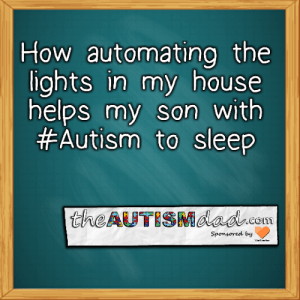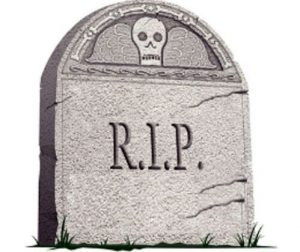Recently, the Lost and Tired family has been coping, rather, attempting to cope, with a significant increase in meltdowns. This recent increase has me scrambling for better ways to handle them. In the case of my oldest, Gavin, something that works once may never work again.
The meltdowns we now experience with Gavin are not as bad as they used to be, however, we are very quickly moving back in that direction. Yesterday, we experienced the worst meltdown we’ve seen in the better part of a year. Each meltdown is becoming more and more intense. Thankfully, Gavin doesn’t lash out at those around him. If anyone is ever injured, it’s likely they were collateral damage.
Collateral damage means that they were injured during the course of Gavin’s meltdown on accident. It’s of little comfort to those injured but I have to take comfort in the fact that he’s not targeting others with his rage…..at least at this point.
I have been trying new approaches to managing these meltdowns in order to limit their impact on the rest of the Lost and Tired family. This has required outside of the box thinking and is considered to be a work in progress. I have however, been met with some success thus far. I have employed the use of Lego’s as a means of providing a very natural consequence for his behavior.
Natural consequences involve a child learning from his or her own mistakes. For instance, if a child doesn’t eat dinner, he will find himself hungry later.
In our case, Gavin will hold one of his Lego creations with both hands during his meltdown. This serves a dual purpose. It keeps his hands safe by limiting his ability to hit himself or someone/something else. Plus, by continuing to meltdown, he risks breaking his Lego creation. Any pieces that fall off during the meltdown become mine. He will then have to earn them back. The damaged Lego creation and/or the loss of the pieces that have fallen off, are natural consequences of his behavioral choices.
We typically use sit like a pretzel as a means of controlling his legs but that has begun to lose effectiveness. As a result I’m trying to use a stance he uses in martial arts called Seiza.
Courtesy of Wikipedia:
To sit seiza-style, one first kneels on the floor, folding one’s legs underneath one’s thighs, while resting the buttocks on the heels. The ankles are turned outward as the tops of the feet are lowered so that, in a slight “V” shape, the tops of the feet are flat on the floor and big toes are overlapped, and the buttocks are finally lowered all the way down. Depending on the circumstances, the hands are folded modestly in the lap, or are placed palm down on the upper thighs with the fingers close together, or are placed on the floor next to the hips, with the knuckles rounded and touching the floor. The back is kept straight, though not unnaturally stiff. Traditionally, women sit with the knees together while men separate them slightly. Some martial arts, notably kendō, aikidō, and iaidō, may prescribe up to two fist widths of distance between the knees.
Similar to the way that every child and adult on the Autism Spectrum is unique, so is the approach needed to help them.
What you hear me do in this educational video works for Gavin. They may or may not work for you. My hope is that something might be learned from our experience. If nothing else, perhaps witnessing an actual meltdown might help people better understand what some special needs families are contending with.
Nothing about this is easy. It’s not always easy to be patient, especially when I know that Gavin has control over many of these situations. Pay close attention what he does after a piece falls off his Lego ship and you’ll see what I mean.
My heart goes out to all of the people out their affected by these meltdowns, especially those physically having the meltdown themselves. It can’t be easy. I hope that in the course of watching some of these videos I post, you will find ways to better help someone that is experiencing one of these meltdowns. Not every person has control over these situations as I know Gavin does. That is some that I think is very, very important to keep in mind. Often times these meltdowns are completely outside of the control of the person having them.
When I’m working through a meltdown with Gavin, there are some things I try and stay focused on.
There are 4 things I focus on during a meltdown:
1) Safety (for Gavin and those around him, including myself)
2) Remaining Calm
3) Minimizing the impact on the rest of the family.
Two very important things I do once we have worked through the meltdown are as follows:
1) Ensuring there are consequences for behavior (Natural Consequences are best)
2) Attempt to learn from the experience and try to prevent or limit it from happening in the future.
Disclaimer: This video is for eye opening, education purposes. This is not done to somehow make Gavin look bad. Gavin is a great kid and we love him very, very much. That being said, his behaviors are a huge problem. My goal here is to help others to better understand what happens during these meltdowns and the measures we take to regain control of the situation. Every child on the Autism Spectrum is different and for that reason, what works for the Lost and Tired family may not work for yours.
Likewise, my reactions to these behaviors may seem, callous and lacking compassion. However, I assure you that my reactions are carefully managed in order to do what is best for Gavin. Gavin is not a typical Autistic child and so typical things don’t work.
[youtube width=”720″ height=”480″]http://www.youtube.com/watch?v=VRDyb-es4qw[/youtube]




Very educational. Thanks!
My recent post My Favorite Things About School: PE